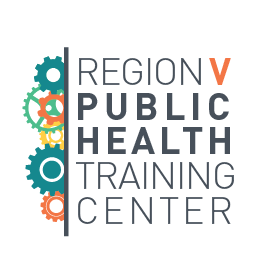By Lia Triscari, BSN, RN, Pediatric CCRN, Indiana Public Health Association Intern, Purdue University FNP-DNP Graduate Student
During my time as a graduate student at Purdue University, I have had the opportunity to learn and work with the Indiana Public Health Association (IPHA) as an intern for a health policy residency course. As a Doctor of Nursing Practice (DNP) student in the primary family nurse practitioner (FNP) program at Purdue, I have spent many classes learning about maternal and infant mortality rates and health disparities.
The United States has the highest maternal and infant mortality rates out of any other comparable high-income country despite spending the most on healthcare out of those countries (Tikkanen et al., 2020). The Centers for Disease Control and Prevention (CDC) states that more than 80% of pregnancy-related deaths were preventable and cites that improving prenatal care is one of the top recommended interventions needed (CDC, 2022). According to the Office on Women’s Health in the U.S. Department of Health and Human Services (2021), “babies of mothers who do not get prenatal care are three times more likely to have low birth weight and five times more likely to die than those born to mothers who do get care.” Indiana is currently ranked 39th in maternal and infant health (America’s Health Rankings, 2023). These statistics describe how despite the US’ large technological and financial benefits, we are still inadequate with the most common human process throughout history: helping people have a healthy birth.
Barriers to prenatal care
The following have been identified as barriers to prenatal care (Krukowski et al., 2022; Testa et al., 2023; Testa & Jackson, 2021):
- Lack of transportation
- No leave at work/school
- Lack of childcare
- Having no appointments available when they wanted
- Being unable to afford prenatal care
- Doctor or health plan would not start prenatal care as early as they wanted
- No Medicaid card
- Too busy
- Did not want to disclose pregnancy status
- Not being aware of the pregnancy
Barriers to care for those in rural areas include lack of access and increased time needed for transportation, compared to those in urban areas. These were noted as some of the largest barriers, following financial barriers, why individuals do not get prenatal care. These barriers fall into categories such as structural, socioeconomic, sociocultural, and personal.
Twenty-five counties in Indiana are considered maternal health care deserts, and another 12 are considered low access (Indiana University Public Policy Institute, 2022). Increasing prenatal care for pregnant people can also be impacted by policies and legislation. When individuals have healthy children and safe pregnancies, there is an overall decrease in spending and a decrease in maternal/infant mortality rates. Data from pregnancy-related deaths from 2018 to 2021 in Indiana show that those with Medicaid started prenatal care later and attended fewer appointments than those with private insurance (Indiana Department of Health, 2023). By passing legislation that increases access through location and insurance coverage, the gap in access is reduced.
Health Disparities
Factors such as structural racism, geographical barriers, lack of appropriate and accessible education lead to the health disparities of delay to prenatal care initiation, and overall care and access (NCSL, 2021). It is important to recognize health disparities impacting vulnerable populations and how to decrease these disparities in healthcare settings. “Both societal and health system factors contribute to high rates of poor health outcomes and maternal mortality for Black women, who are more likely to experience barriers to obtaining quality care” (NCSL, 2021). Rooted in structural racism, differences in health outcomes are evident when comparing education level and race. Black women with a college degree or higher are 5 times more likely to die from pregnancy than White women; however, in White women, the mortality rate decreases with greater education (NCSL, 2021).
Looking Forward
Lack of prenatal care, particularly in the first trimester, increases the rates of maternal and infant mortality and is a modifiable risk factor. The barriers to prenatal care are multifactorial and require a complex understanding of the patient’s cultural, financial, and personal needs and the structure of the community surrounding them. Most patients see the benefits of prenatal care, but many barriers extend beyond their immediate control.
Due to vast prenatal care barriers for pregnant people, it is important that providers and patients discuss individual barriers and the resources available to assist with them. Due to this, it is important that the providers and patients work together to assess individual barriers and to assess community resources. Each community should assess what programs are available to minimize these barriers. Providers can work together with social workers and case managers in their area to help identify and connect patients to resources needed. Providers should also assess ways that racism and biases might impact their patients at an individual, organizational, and policy level. Areas for policy changes to combat those barriers can improve overall maternal and infant mortality rates on a larger scale.
To learn more, check out these resources:
- America’s Health Ranking – 2023 Annual Report: State Summaries
- Four in 5 Pregnancy-Related Deaths in. the U.S are Preventable press release
- Indiana Maternal Mortality Review Committee 2023 Annual Report
- Maternal Mortality in Indiana (2022) Contributing Factors and Policy Recommendations article
- Correlates of Early Prenatal Care Access among U.S. Women: Data from the Pregnancy Risk Assessment Monitoring System (PRAMS) article
- State Approaches to Ensuring Healthy Pregnancies through Prenatal Care article
- Maternal Mortality and Maternal Care in the United States Compared to 10 Other Developed Countries article
- Prenatal Care webpage
- Intimate Partner Violence and Barriers to Prenatal Care article
- Barriers to Prenatal Care Among Food-Insufficient Women: Findings from the Pregnancy Risk Assessment Monitoring System article
- Centering Black Bodies and Voices in the Public Health Response to the Black Maternal Health Crisis (On Demand-CE) training
- Root Cause Series: A Grassroots Approach to Improving Maternal and Child Health podcast episode

